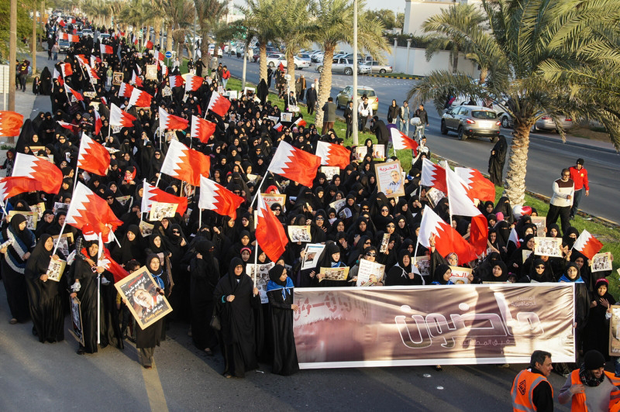31 Jan 2014 | Comment
This article was originally published in the Daily Telegraph, 31/01/14

It’s easy to be glib about social media. Page upon page of selfies, pleas for attention from celebrities, misogynist trolls and angels-on-pinhead arguments.But as the
Telegraph’s recent research shows, the Chinese authorities take the web very seriously indeed.Weibo,
China’s equivalent of Twitter, is a huge platform, with over 200 million users. And for a while, it functioned freely, or as freely as anything does in China. It was, of course, monitored, and thousands of people were employed to post pro-government opinions and stories on the network.But the old-style censorship didn’t seem to be working as well as it should. Partly because it was just too obvious. In March 2012,
rumours spread that the son of a Communist Party Official had been involved in a fatal crash while driving his Ferrari. As people discussed the story, they suddenly found that the word Ferrari had been blocked. For many, this made it clear that someone powerful had something to hide, and people openly wrote about their frustration with the system.Shortly afterwards, Weibo introduced new contracts concerning conduct. Anonymity went out the window. Spreading ‘umours’ became an offence. High profile users were put on alert – if a story you shared went viral, you were personally responsible. On a platform dependent on sharing, this was bound to cause people to think twice before sending their messages out to the world. And on a reactive, interactive and instantaneous platform like Weibo or Twitter, that slowing of pace is lethal. It would appear that Weibo is in danger of becoming boring. Just how the authorities want.Could this happen elsewhere? Look at the debate in the UK: every week a fresh cry goes up for something to be ‘done’ about Twitter trolls, often beyond the existing laws that govern free speech and communication – with the ending of anonymity being a particularly popular (and ill thought out) demand. While these calls may be well-meaning, they are part of a broader uncertainty about how to deal with the fact people now have an unprecedented ability to publish to the world.
The Chinese government (and others, such as the highly tech-savvy Iranians) will tell you that this comes with an unprecedented ability to monitor and censor. As China becomes more and more powerful, its model of web censorship, both internal and external, could become the norm.
21 Jan 2014 | Middle East and North Africa, News

A pro-democracy protest in Bahrain, where activists have been jailed for inciting protests through their online activities (Photo: Moh’d Saeed / Demotix)
One hundred and forty characters are all it takes.
Twitter users from Marrakech to Manama know—call for political reforms, joke about a sensitive topic, or expose government abuse and you could end up in jail. Following the overthrow of Muammar Qaddafi and Zine el-Abidine Ben Ali, authorities in Libya and Tunisia unblocked hundreds of websites and dismantled the state surveillance apparatus. But overall, internet freedom in the region has only declined in the three years since the Arab Spring as authoritarian leaders continue to crack down on any and all threats to their ever-tenuous legitimacy.
As the online world has become a fundamental part of Arab and Iranian societies, leaders are waking up to the “dangers” of social media and placing new restrictions on what can be read or posted online. This shift has been most marked in Bahrain, one of the most digitally-connected countries in the world. After a grassroots opposition group took to the streets to demand democratic reforms, authorities detained dozens of users for Twitter and Facebook posts deemed sympathetic to the cause. Similarly, several prominent activists were jailed on charges of inciting protests, belonging to a terrorist organization, or plotting to overthrow the government through their online activities.
Conditions in Egypt—where social media played a fundamental role in mobilising protesters and documenting police brutality—continued to decline over the past year. In only the first six months of Mohammad Morsi’s term, more citizens were prosecuted for “insulting the office of the president” than under Hosni Mubarak’s entire 30-year reign. Cases have now been brought against the same bloggers and activists that were instrumental in rallying the masses to protest against Mubarak (and later Morsi) in Tahrir Square, while countless others were tortured by Muslim Brotherhood thugs or state security forces.
Even in the moderate kingdoms of Morocco and Jordan, state officials are looking to extend their existing controls over newspapers and TV channels to the sphere of online media. Ali Anouzla, a website editor in Morocco, faces terrorism charges in the latest attempt by the state to silence him and his popular online newspaper, Lakome. Access to independent journalism is even worse in Jordan, where over 200 news sites have been blocked for failing to obtain a press license. The government instituted burdensome requirements in a bid to deter any views that counter the state-sponsored narrative.
If governments are beginning to pay attention, it is because online tools for social mobilisation and individual expression are having a profound impact. Social media accounts were set up for every candidate in Iran’s 2013 presidential elections, despite the fact that Twitter, Facebook, and YouTube are all blocked within the country. In Saudi Arabia – which now boasts the highest Twitter and YouTube usage per capita of any country in the world – social media has been used to promote campaigns for women’s right to drive, to highlight the mistreatment of migrant workers, and to debate sensitive subjects such as child molestation. Citizen journalism was vital in documenting chemical weapons use in Syria, and a new online platform alerts local residents of incoming scud missiles. Nonetheless, Iran, Saudi Arabia, and Syria rank as some of the least free countries in the world in terms of internet freedom according to Freedom House’s Freedom on the Net study.
Remarkably, the country that has made the most positive strides over the past three years, was once among the most repressive online environments in the region – Tunisia. Protest videos from the town of Sidi Bouzid led to an intense crackdown on online dissidents by the Ben Ali regime. Digital activists even enlisted the help of Anonymous, the hacktivist group, to rally international media attention, provide digital security tools, and bring down government websites. Since then, Tunisian authorities have ceased internet censorship, reformed the regulatory environment, and ceded control of the state-owned internet backbone. Tunisia is now the only country in the region to have joined intergovernmental group the Freedom Online Coalition.
So while the snowball effect of social media contributed to the overthrow of several despots, many of the region’s internet users conversely find themselves in more restrictive online environments than in January 2011. Authoritarian governments now know exactly what the face of revolution looks like and, over the past three years, have shown their commitment to counter the internet’s potential to empower citizens and mobilise opposition. Users in liberal democracies may joke about the insignificance of “liking” a post on Facebook or uploading a video to YouTube, but in a region where your social media activity can make you an enemy of the state, 140 characters can lead to serious repercussions.
This article was posted on 21 January 2014 at indexoncensorship.org
20 Jan 2014 | Middle East and North Africa, News, Palestine

The logo of the Al Qassam Brigade, the armed wing of Hamas
Last week, Hamas’ militant wing the Iz Al Din al Qassam Brigades announced via their website that their primary English-language Twitter account, @alqassamBrigade had been suspended. The group said : “The Qassam Brigades confirmed that they did not violate Twitter’s terms of service ever … Twitter still not sending Al Qassam any justifications for the suspension.”
When asked by Index why the account was suspended, a spokesperson from Twitter responded: “”We do not comment on individual accounts, for privacy and security reasons.”
Twitter’s decision to suspend the account becomes evermore confusing beyond this first glance. If the goal is to prevent Al Qassam from using Twitter, it’s ineffective, as their secondary English-language account as well as a primary Arabic account are both still active- not to mention the ease with which a new account can be created. It’s difficult to see what closing the account achieved other than giving a group that, by definition feeds off exclusion from the mainstream, fuel for pariah status.
Moreover, the timing of the decision appears to be somewhat out of the blue. If Twitter was truly concerned about inflammatory remarks, then they would have suspended the account back in November 2012, when Al Qassam and the Israeli Defence Force used Twitter to bait one another during the last Gaza war. This period set a new bar in terms of direct and hostile communication via Twitter, not just between Al Qassam and the IDF but also by their supporters. Objectionable though some of it may have been, Twitter never interfered with the fray.
Nonetheless, this particular corner of the Internet is constantly caught between the need that websites such as Twitter act as a transmitter of free speech, and the extreme pressure that it is subjected to by interest groups. On the 20 November 2012, “Christians for a United Israel” filed a petition with Twitter to close Al Qassam’s account, on the grounds that it counted as “material support” for an internationally recognised terrorist group, Hamas.
But as David Cole pointed out in a piece for the Daily Beast’s Open Zion blog at the time, the terms of what constitutes this “material support” are so broad as to be almost meaningless – and Gaza is filled with so many international products that it could be argued that Coca Cola, ExxonMobil and a large number of Israeli products that are regularly exported to Gaza are also supporting Gaza’s ruling Hamas party. Twitter is simply a conduit – as Cole points out, “Twitter is for all practical purposes a ‘common carrier’, providing its service to all comers. Would we hold a telephone company responsible for allowing a gang to use its phone lines to plan a crime, or the Postal Service responsible for delivering a package of drugs?”
The other curious element about this timing is that the suspension comes at a time when jihadist accounts are proliferating on Twitter, in Arabic and in English. Jihadist individuals and groups within Syria have increasingly taken to social media as a way to spread a message about their beliefs and intentions as part of Syria’s civil war. Individual members of Jabhat Al Nusra and increasingly ISIS have used Twitter as a means of provoking one another off the battlefield. While this may not be the official accounts of each group tweeting, it is not so different in content from anything that Al Qassam have tweeted recently. If Twitter were truly concerned about the content of Al Qassam’s account, then they would have been forced to close far more than just the one.
Terrorist groups using different forms of media to transmit their message to a wider public is nothing new. Complaining that Twitter helps terrorists talk to the public sounds as outdated as complaining that Al Jazeera broadcasted statements by Osama bin Laden: in this sense, the medium is not the message.
To consider the alternative for a moment: Gaza is not a haven for free media. Journalists of any nationality that operate on the ground there do so under heavy restrictions from a variety of parties. Beyond the day to day restrictions on their movement, speech and work, talking directly to the Al Qassam Brigades is almost impossible. Social media, while potentially a tool for propaganda, is one of the few ways that the wider public is able to know what is happening inside Al Qassam Brigades and Hamas. Cutting off this line further maligns part of a regime that uses this seclusion to its political advantage within Gaza, and allows Hamas to further clamp down on free speech within the Strip. In short: the content may be a strange development on Twitter, but its absence potentially has tangible effects for people on the ground.
This article was posted on 20 January 2014 at indexoncensorship.org
15 Jan 2014 | China, Digital Freedom, News, Politics and Society

Despite state censorship and political repression, social media is changing the protest landscape in China.
With the exception of economic reform that started in the late 1970’s, the country has remained restricted by government policy and ideology. A one party state has led to a national media that lacks plurality and regularly fails to report on incidents that they fear may damage the government’s image. Combined with internet censoring and heavy-handed tactics being employed against state opposition, freedom of expression has always been limited, but there is hope for change.
Social media within China has expanded rapidly, Sina Weibo — 60 million active daily users, 600 million registered users (Sep 2013) — and WeChat — 300 million registered users, of which 100 million are international (Aug 2013) — are two of the most popular. This allows a democratic spread of information that has never previously been available to citizen journalists or local people.
A media project by the University of Hong Kong showed the importance of Weibo in relation to the 2012 protest in Shifang against potential environmental damage by a proposed copper plant. Traditional media largely declined to report on the protests themselves, but made reference to ‘an incident’ and the rising stock price of a tear gas company, whose product was used on protestors. In contrast, there were around 5.25 million posts on Weibo containing the term ‘Shifang’ between 1-4 July with 400,000 containing images and 10,000 containing video. A similar incident occurred in Chengdu, Sichuan province, when factory workers went on strike to demand higher wages. State media ignored the protests while social media spread the news that tear gas was being used, along with images of the protest. Eventually officials stepped down and workers received a raise. Physical protests can be complemented by online activity, but it is not without difficulties.
In addition to the notorious firewall, the government can censor specific words to try and control the narrative of any given incident, by pushing their own agenda and restricting citizens’ freedom of expression. However, many online users use images, and memes in particular can portray a serious topic in a light-hearted manner, further increasing the spread of information.
An OECD report in 2013 evaluated government trust in various countries, China ranked very well with 66% compared to an OECD country average of 40%. However, this disguises some of the ill-feeling towards local government officials, who are usually held accountable by the people. This could change though, as economic policy, typically the role of central government, leads to growing inequality. New leadership within the government is attempting to maintain and improve government trust, by introducing ‘Mao-esque’ techniques in an attempt to bring everyone together under one nation.
It is clear that censorship is one way of trying to achieve this, as those who openly promote citizens’ rights, inclusive democracy and transparency are regularly arrested, including Xu Zhiyong. Additionally, new training materials for journalists and editors suggest a government eager to maintain control, as they expect that the media “must be loyal to the party, adhere to the party’s leadership and make the principle of loyalty to the party the principle of journalistic profession.”
Recently, a planned protest to honour a strike over censorship last year was pre-emptively halted, when police warned or detained several people thought to be involved. A well-known campaigner for freedom of expression, Wu Wei, said that protests such as this were not accepted by the government, as they did not fit “within their social stability framework.”
The government is so concerned over social instability that Tiananmen Square is heavily monitored by uniformed and plain-clothed police. The ability to suppress dissent as quickly as possible is necessary in a popular tourist destination, to portray the image of a peaceful China to both international and domestic visitors. The digital censorship employed the government is reflected in physical terms by the large security presence in one of China’s most well-known but contentious landmarks.
The Chinese government is keen to have control over the nation’s information, and fear that freedom of expression and information could pose a threat to their power. Social media offers a critical viewpoint that is lacking from state-controlled media. However, even social media has not been able to completely detach itself from the Chinese government’s censorship.
Nonetheless, the increasing use of social media and rapid spread of information is putting pressure on the government that it has never felt before while the digital revolution is gaining more and more momentum. Democratic consciousness is rising in China and with the state pursuing an oppressive agenda, cultural change from the bottom-up, rather than institutionalised change from the top-down, is necessary to pursue these principles.
This article was posted on 15 Jan 2014 at indexoncensorship.org




